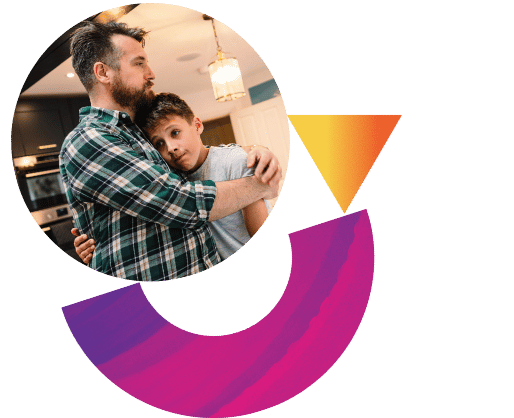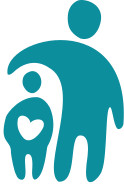Course modules
1. Introduction
1.1 Welcome to this course
1.2 Moving through the course
1.3 You and this course
1.4 References
2. Why think about trauma
2.1 Prevalence of PTSD and depression
2.2 Adverse Childhood Experiences and the impact on adults
2.3 Polyvictims
2.4 Why think about trauma?
3. A refresh of the Solihull Approach model
3.1 What can you remember?
3.2 The Solihull Approach model
3.3 Reciprocity
3.4 Behaviour
4. What is trauma?
4.1 Definitions of psychological trauma
4.2 The individual impact of trauma
4.3 Types of trauma: Type 1
4.4 Type 2 trauma
5. Going through a traumatic experience
5.1 The natural response to threat: fear
5.2 Evolutionary, cognitive and emotional response
5.3 Introducing the ‘window of tolerance’
5.4 Your response to stress
5.5 A child’s response to stress
5.6 A teenager’s response to stress
5.7 The window of tolerance again
5.8 Dissociation and hyperarousal
5.9 More about dissociation and hyperarousal
5.10 The freeze response
5.11 Dissociation as adaptation
5.12 Hyperarousal
5.13 The arousal continuum and self-soothing
6. Neurology and trauma
6.1 Baby brain development
6.2 Trauma and baby brain development
6.3 Trauma and neural plasticity
6.4 Summary
7. Recognising trauma
7.1 Recognising trauma
7.2 Trauma memories
7.3 Observable criteria of trauma
7.4 Signs of trauma from childhood to adulthood
7.5 Summary
8. Trauma, attachment and epigenetics
8.1 Introduction
8.2 Recap of attachment
8.3 The Strange Situation and the attachment categories
8.4 Attachment styles and patterns of behaviour
8.5 Trauma and disorganised attachment in the next generation
8.6 Disorganised attachment and the reaction to trauma
8.7 Type 2 trauma and disorganised attachment
8.8 Trauma and epigenetics
8.9 Dandelions and orchids
8.10 Epigenetic changes in trauma
8.11 Summary
9. Recovery from trauma
9.1 Introduction
9.2 Recovery
9.3 A sense of coherence
9.4 Autobiography in 5 chapters by Portia Nelson
9.5 Stages of recovery
9.6 Recovery and neurology
9.7 Role of the amygdala and hippocampus
9.8 A ‘normal’ reaction to trauma
9.9 Containment and recovery
9.10 Reciprocity and recovery
9.11 Behaviour as communication and recovery
9.12 The setting and recovery
9.13 Summary
10. Community trauma
10.1 Introduction
10.2 Community trauma
10.3 The microsystem, exosystem and macrosystem
10.4 The SELF model
10.5 Trauma and society
10.6 Post traumatic growth
10.7 Summary
11. Organisational trauma
11.1 Introduction
11.2 Systems under siege
11.3 Toxic stress
11.4 SELF and organisations
11.5 Summary
12. Trauma aware community
12.1 Introduction
12.2 Relationships and trauma awareness
12.3 Trauma therapies
12.4 Trauma awareness in the community
12.5 A reminder of individual responses
12.6 Some ideas
12.7 Summary
13. Conclusion
13.1 Conclusion
13.2 Feedback questionnaire
13.3 References
13.4 Acknowledgements and certificate
About this course
This advanced, certified course provides a deeper understanding of trauma and trauma recovery. Preferably studied following the 2 Day Foundation training, this concise CPD is relevant for all practitioners across sectors and equips you to effectively recognise and understand the different types of trauma.
Rooted in psychological expertise and practical experience, the course content is designed to support professionals in all interactions through trauma-informed knowledge and strategies.
Trauma and the Solihull Approach model
Designed to help move theory into practice, Understanding trauma will further increase practitioner’s understanding of the model and its applications, as well as using the concepts to illuminate an understanding of trauma.
Certificates and Advanced Practitioner recognition
Your certificate will be provided upon completion of the course. Advanced Trained Practitioner certificates are awarded to those who have completed three advanced level courses following the 2 Day Foundation training. To receive your advanced trained practitioner certificate, please contact the Togetherness team providing copies of your qualifying training certificates.


